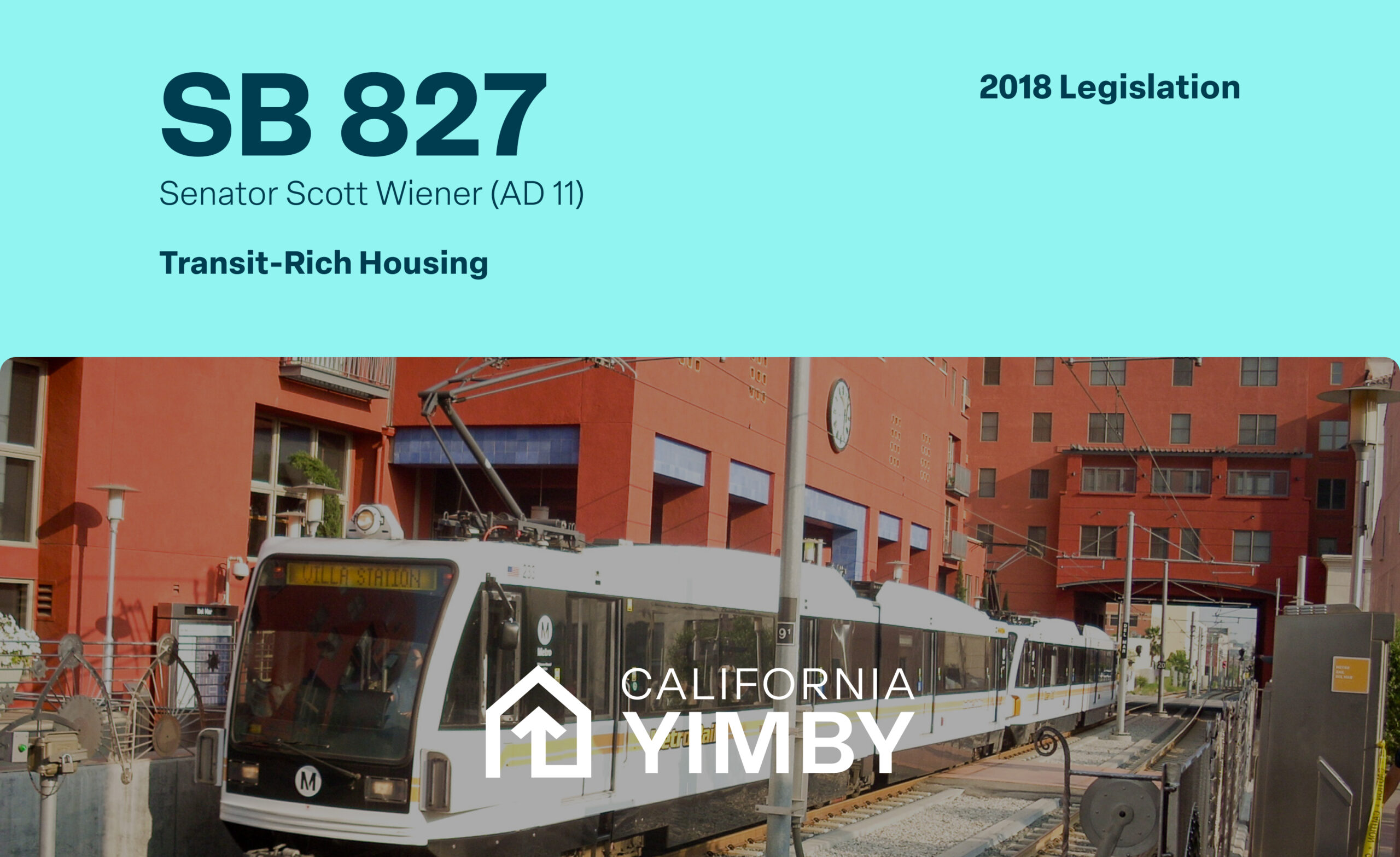SB 827

Senate Bill 827 would have established an incentive for building housing near high-quality transit by exempting these developments from certain restrictive and low-density zoning standards.
Zoning in places like San Francisco have radically restricted the natural growth of cities and pushed new housing and low-income housing to increasingly distant places from California’s urban centers, because job growth in urban areas often outpaced the growth of new homes. For example, for every new job created in San Francisco since 2010, only .096 homes were created, an imbalance of approximately 10.4 to 1.
SB 827 would have established:
- Inclusive zoning in California that allows buildings of up to 85 feet, or about 8 stories, only within one block of a major transit stop, which is multiple bus lines running every 15 minutes or a major rail stop, like BART.
- That buildings could rise up to 5 stories with a half mile or a quarter mile of reliable transit service, as already defined in state law.
- Exemptions from local parking minimums and aesthetic standards, but only within those specified envelopes.
- An exemption from locally-imposed density maximums that are unrelated to the safety of the buildings or tenants, such as those used to keep apartments out of rich neighborhoods by limiting the number of families that can live on a parcel.
- An opt-in process whereby developers could choose to use SB 827, with no requirement they do so.
Local control of housing supply has resulted in segregation, displacement, and rent burden. SB 827 would have reversed those processes by allowing new housing construction in exclusionary communities and ensuring the continuity of existing tenant protections.
Updates: SB 827 died in the Senate Housing and Transportation Committee on 4/17/18 by a vote of 4 to 6.
Several of its provisions were later included in successful legislation, including SB 9, SB 10, and AB 2097.
Author: Wiener (D, SD 11)
Co-authors: Skinner (D, SD 9), Ting (D, AD 19), Hueso (D, SD 40)